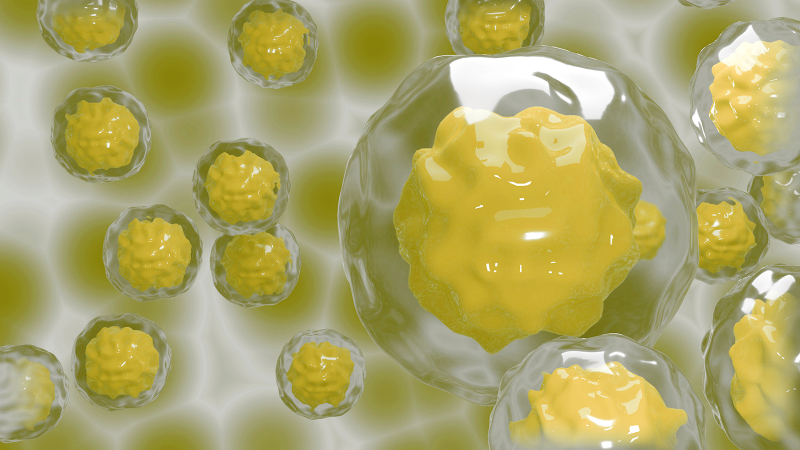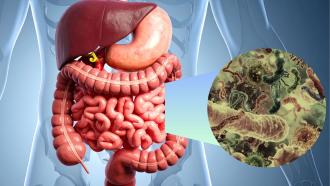
Ageing is a medically relevant phenomenon far too complicated to understand under the given laboratory conditions. Despite the human genome being available now for almost two decades, even the remotest possibility to delay, let alone halt the ageing-related diseases has been hard to come by. Scientists around the world are trying to demystify this biological enigma, and one such attempt has been made by researchers at Savitribai Phule Pune University.
In a recent study led by Dr Geetanjali Tomar of Savitribai Phule Pune University, the researchers explored if mesenchymal stem cells derived from gingiva, or gum tissues (Gingiva-derived Mesenchymal Stem Cells or GMSCs) of a human donor can be used to repair tissues or control the immune response in the human body. Mesenchymal stem cells are a type of stem cell that can potentially transform into any kind of cell in the body. One of the key challenges to using such tissues was how the donor’s age affects the growth, physical characteristics and the stem cells’ potential to form different types of body cells — an important indicator of any stem cells. The researchers found that the donor’s age does not affect these factors.
A tissue source from which stem cells can be isolated for use in therapy is not easily available. “For example, bone marrow as a source of stem cells has been widely researched, but it is difficult to harvest bone marrow, and the yield of stem cells is low. Other sources such as adipose tissue and umbilical cord tissues have similar availability issues,” explains Dr Tomar. Hence, the use of human gingival tissues as stem cells has gained traction over the past decade because they are easier to harvest, easy for a donor to donate and have a relatively high yield. But whether these tissues can function as stem cells for therapy involving tissue regeneration and immunoregulation was a question that has remained elusive.
The researchers divided the gingival tissues into three groups based on donor age: group A (13–31 years), group B (37–55 years), and group C (59–80 years). Both quality and quantity of mesenchymal stem cells from other tissues, including bone marrow, fat tissue, and other supporting tissues surrounding the teeth, are known to be affected by the donor’s age. However, the researchers found that the donor’s age does not affect the quality or quantity of the GMSCs, a property that could be leveraged for treating diseases.
Why is age such an important parameter for stem cells, and how are GMSCs better? Ageing results in a significant decline in the availability of a large number of good-quality stem cells. Important properties of stem cells, such as their doubling, morphology, and most importantly, their ability to form other body tissues, deteriorate with age. It is difficult to harvest tissues from older people.
“Although gingival stem cells deteriorate in some functions, they still retain many good characteristics that can be utilised for designing therapeutic applications,” says Dr Tomar.
One of the important characteristics of stem cells is how they look physically, especially when taken outside the body and grown under laboratory conditions. The study indicated that donor age did not affect the physical property of these cells. All the harvested cells maintained their biological nature to form supporting tissues and efficiently formed colonies or aggregates of cells necessary for stem cell function.
Surface markers are special types of proteins expressed on the surface of cells that help identify and isolate particular groups of stem cells. The current study found that GMSCs from all age groups expressed these surface markers without contamination from other kinds of cells.
A key challenge in using stem cells is that the ageing of the donor depletes the pool of stem cells and results in a significant reduction in their function. This process is referred to as senescence. The current study found that the GMSCs from young donors tend to progress faster towards ageing, while adult GMSCs tend to have a reduced rate of ageing in the laboratory. These results were interesting in the sense that somehow the adult GMSCs have a built-in mechanism to get rid of senescent cells and maintain a healthy pool of stem cells. The researchers also saw an increased level of biological indicators that point to increased cell senescence by either cell death or cell self-destruction.
The findings related to senescence were further supported by increased expression of a gene responsible for preventing cell multiplication in the adult GMSCs (group C), indicating that the cell had an efficient mechanism of avoiding DNA damage and reduced chances of senescence-associated tumour formation. GMSCs also promote the expression of growth factors that compensates for the senescence-induced cell population decline or any other ageing-associated stress conditions. This is an efficient mechanism to maintain stable tissue conditions and a healthy stem pool in the gingival tissue.
This maintenance of tissue homeostasis is also aided by cell migration (directed movement of a single cell or cell population) to maintain a healthy stem cell pool. The study found that the donor’s age does not significantly affect the movement of cells to the site of damage, indicating that the growth and physical characteristics of GMSCs remained largely unaffected by the donor’s age.
The researchers then looked at the functional characterization of these GMSC in terms of whether these stem cells can grow into different cell types. The study showed that these GMSCs are favourably transformed into neuronal cells, but transformation into cells that could form fat cells or bone cells was less favoured.
Dr Tomar says, “The ability of gingival stem cells to form bone cells or fat cells (adipose tissue) declines with the age of their source, but their ability to form neurons remains intact, and therefore, these cells could be implemented for disorders/ diseases related to neurodegeneration.”
To test the therapeutic potential of GMSCs, the researchers wanted to understand whether these cells exhibit any behaviour that can change the body’s immune system — either activate or suppress it. They found that GMSCs can potentially change how the immune system behaves. However, the immunosuppressive behaviour of the GMSCs declined with their age. However, the results were not significant enough, so the GMSCs could still be said to modify the immune system.
GMSCs and SARS-CoV2
The researchers then tried to mimic the inflammatory lung condition, similar to SARS-CoV-2, characterised mostly by lung inflammation, infiltration of neutrophils (a kind of blood cell that helps fight infection), and increased expression of inflammatory cytokines. Under such conditions, the researchers found that the administration of GMSCs significantly reduced neutrophils in induced acute lung infection, indicating their high immunosuppressive behaviour. These results also corroborated with the reduction of other potential markers of tissue inflammation necessary to prevent cell growth and tumour prevention.
The administration of GMSCs from all age groups of donors was found to improve almost all parameters of lung injury to varying extent, indicating that if these GMSCs were implemented for stem cell therapy in human patients, it would significantly improve the overall lung conditions.
“With the increasing age of the donor, gingival stem cells are not able to reduce the levels of inflammatory cytokines, but they do bring about regenerative changes in the lung tissues that have been damaged by infection or inflammation,” comments Dr Tomar. “So far, no one had tested gingival stem cells, and no one had carried out an age-related study (in view of autologous therapy),” says Dr Tomar.
While a single dose of GMSCs administration was followed in the study, the researchers do suggest that multiple rounds of administration followed by more extended observation periods could provide better insights into the age-related immunoregulatory and regenerative behaviour of GMSCs. This immunomodulatory behaviour of GMSCs could be a potential treatment for SARS-CoV-2-induced lung damage, particularly in the aged population.
“For the results of the current study to have any real-world application in the immediate future, more research in collaboration with clinicians is needed,” concludes Dr Tomar.
Editor’s note : This article has been updated to incorporate certain inputs received from the researchers.






